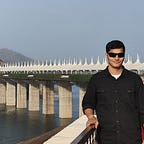Indian Gangsters: A Tale of Crime, Power, and Notoriety
India, a land of diverse cultures and traditions, has a complex and often untold history of organized crime. Indian gangsters have risen from the fringes of society to become infamous figures, wielding significant power and influence. Their stories are a mix of crime, rebellion, and a quest for dominance. In this essay, we will explore the world of Indian gangsters, their origins, notable figures, and their impact on Indian society.
Origins of Indian Gangsters:
The roots of Indian gangsters can be traced back to the early 20th century. Factors like poverty, unemployment, and a desire for social justice have often pushed individuals to the fringes of society, where they form criminal organizations. These organizations are typically engaged in activities like smuggling, extortion, and drug trafficking.
The Bombay Docks Explosion:
One of the earliest instances of organized crime in India was the Bombay Docks Explosion in 1944. A massive explosion at the Bombay docks led to a black market for gold and silver, which became the breeding ground for organized crime. This incident marked the beginning of criminal enterprises in the country.
Karim Lala and the Pathan Gang:
Karim Lala, a name synonymous with Mumbai’s underworld, was one of the first prominent gangsters in post-independence India. Originally from Afghanistan, he formed the Pathan gang and was involved in smuggling, bootlegging, and extortion. The Pathan gang was known for its control over the Mumbai docks and its dominance in the criminal underworld.
Haji Mastan and the Rise of Smugglers:
Haji Mastan, another iconic figure, emerged as a prominent figure in Mumbai’s underworld. He was a key player in the smuggling trade, and his influence extended into the film industry. Haji Mastan’s rise marked the fusion of the underworld with Bollywood, a trend that would continue in subsequent years.
Dawood Ibrahim and the Global Reach:
The most infamous name in the world of Indian gangsters is undoubtedly Dawood Ibrahim. He started as a small-time crook and eventually rose to power as the head of the D-Company. Dawood is known for his involvement in criminal activities like drug trafficking, extortion, and terrorism. The 1993 Bombay bombings, a series of coordinated terrorist attacks in the city, were believed to have been orchestrated by him. Dawood’s network extends globally, with significant influence in countries like the United Arab Emirates and Pakistan.
Chhota Rajan and the Gang Wars:
Dawood Ibrahim’s rise also led to violent gang wars in Mumbai. Chhota Rajan, a former associate of Dawood, became his bitter rival. The city witnessed a gruesome power struggle between these two criminal masterminds, resulting in violence and a trail of bloodshed.
The Bollywood Connection:
One of the intriguing aspects of Indian gangsters is their association with the world of Bollywood. Several actors, filmmakers, and other figures in the entertainment industry have had associations with the underworld. The criminal organizations often financed films and used the industry for money laundering. This nexus between crime and the film industry has been a subject of fascination and controversy.
Impact on Society:
The presence of Indian gangsters has had a profound impact on Indian society. Extortion, violence, and a culture of fear have been prevalent in certain areas. Innocent lives have been lost, and the country’s image has been tarnished by its association with organized crime. At the same time, the fascination with these figures has been reflected in popular culture through movies, books, and television series.
The Challenge of Eliminating Organized Crime:
Despite the efforts to combat organized crime, these criminal organizations have proven to be highly adaptable. They have diversified into various activities, including real estate, and have extended their influence into politics and business. The corruption and criminal networks run deep, making the eradication of these organizations a formidable challenge.
The Future of Indian Gangsters:
As India continues to modernize and evolve, so does the world of organized crime. New figures and organizations emerge, and the nature of their activities changes. The rise of cybercrime and transnational criminal networks presents new challenges for law enforcement.
Conclusion:
Indian gangsters have a long and complex history, interwoven with society, politics, and the economy. They have left an indelible mark on India’s narrative, with their rise to power and their often violent reign. These figures, from Karim Lala to Haji Mastan, Dawood Ibrahim, and Chhota Rajan, have both fascinated and horrified the nation.
The story of Indian gangsters is one of crime, rebellion, and a struggle for dominance. It’s a tale of power and notoriety that transcends the boundaries of morality and legality. While law enforcement has made efforts to curb the influence of these criminal organizations, the underworld continues to adapt and thrive. As India moves forward on its path of progress and development, the complex relationship between the state and organized crime remains a challenge that must be reckoned with, and the legacy of Indian gangsters will continue to be a part of the nation’s complex history.
